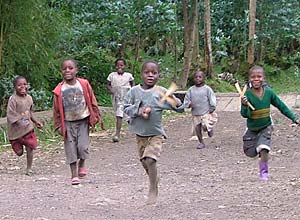
“Education is inoculation,” we are frequently reminded by Dr. Betty Gilmore, our team leader and the director of the Dispute Resolution and Conflict Management program at Southern Methodist University. With that in mind, our team has been seeking and absorbing material about Africa and, specifically, Rwanda. As I’ve gone about my daily reading, I’ve been a little discouraged. Just 42 days and the unread stories of this small, beautiful country seem to stretch out to infinity. One of the surface features of the Rwandan story is that of tribes.
This region of Africa has been inhabited by three primary tribes: the Hutu, Tutsis, and the Twa. The Twa is a very small part of the Rwandan population — about 1%. A Pygmy people, the Twa are hunter-gatherers and skilled in the craft of pottery. The Hutus have always been the largest of the tribes with over 80% of the population. Even though a minority, the Tutsis gained power and ruled over the region for over a hundred years with relative peace. When the Belgians discovered the riches of Rwanda and began their colonization and control of the country, they immediately begin to show favor to the Tutsis, providing better education and financial incentives. The discrimination fostered by the Belgians served to increase the ethnic divide of the country. Finally, when the Tutsis began to tire of outside influence and begin to push back, the Belgians incited the Hutus against the Tutsis. Violence between the tribes was present long before the holocaust of 1994 and tens of thousands of Tutsis were slaughtered over several decades.
In 1994, a long-engineered killing spree was initiated against the Tutsis. Over the period of 100 days, close to a million people — men, women, and children — were slaughtered in the name of ethnic cleansing. The world community was slow to respond. To those on the ground in Rwanda, I’m certain that it felt like the world was simply choosing to look the other way.
This little bit of history doesn’t tell the full story. Nor does it inform us of all that has happened in the last 20 years. But it does give us a frame of reference for our mission come September.
While tribes have been an integral part of the fabric of this country and most of East Africa, we are going to share about the potential for reconciliation that springs from the hope of a larger view. What we hope to share is a simple truth. Some concepts have far more potential than those associated with caste and ethnicity. We are going to reinforce what these wonderful people long to believe — by valuing every human being and through acts of forgiveness, true peace can come. And, we can’t help but touch on the even more gigantic truth. We are all God’s children. And that means more than tribe, the deepness of the pigment in our skins, the shape of our nose, the accent in our speech, or our earthly family tree.
We are His. And because of that, we must act differently from the world. We’re still part of a tribe. But the tribe is not set apart as Tutsi or Hutu or Twa — or African or Asian or European or American. Our tribe is one.
